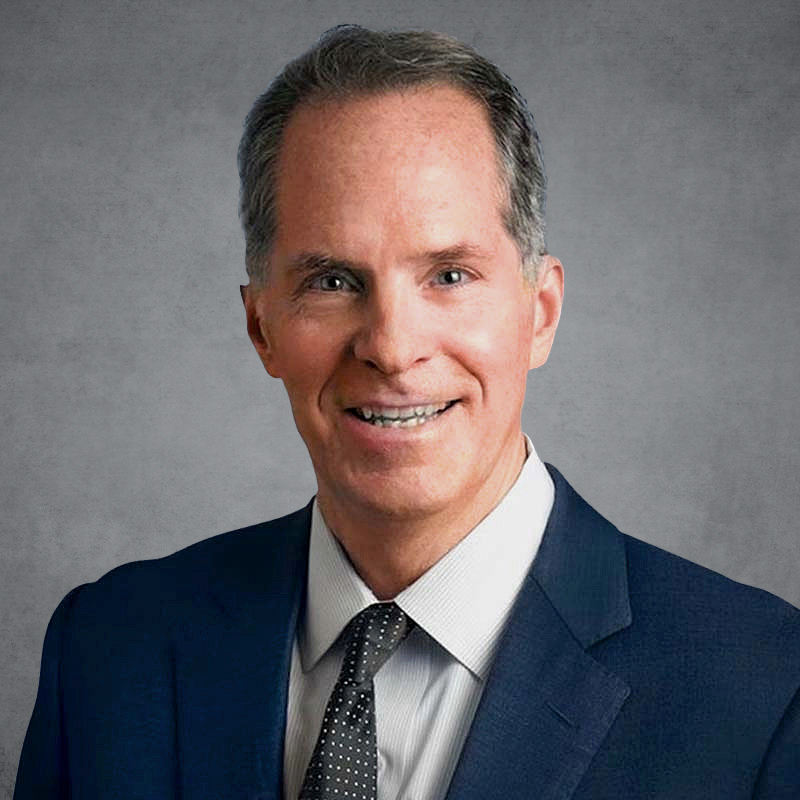

Executive Perspectives
From cave drawings and oral traditions to written narratives and today’s multimedia engagement, humans have been fascinated with storytelling for as long as we have been human. So why has storytelling stayed with us through the ages? And why does it continue to play such a profound role in society?
Stories enable us to make sense of the world around us and organize information – a fact that is especially true given the perpetual onslaught of information coming at us today. Research from the University of Missouri demonstrates that sharing stories has a community benefit by helping build trust, cultivate norms, transfer knowledge and generate emotional ties. Stories build empathy by connecting the audience to a narrative that is larger than their individual worldview. In brief, stories create meaning.
The pull of storytelling is even powerful enough to impact our brain chemistry. Neuroscience studies have shown that our brains release oxytocin, a hormone associated with trust and bonding, when we hear stories. Stories also activate our brain’s reward system, freeing dopamine – the “feel good” neurotransmitter that can help enhance our memory. Finally, storytelling physically connects us, since our brains actively synchronize with those of storytellers in a process called “neural coupling.” That means when we hear a story, we bond with others through a memorable, shared experience.
Given these powerful psychological and biological effects, when we think of the brands we find most memorable, it makes sense that they are the ones able to tell the most compelling stories. It is no wonder then, that there is extraordinary business value to be uncovered for the companies and leaders that understand how to create an amazing story. From improving brand equity and customer engagement to driving revenue growth, telling a better story weaves a narrative that resonates with employees, consumers, investors and the market. CEOs can capitalize on this transformative role of storytelling as a secret weapon to drive unparalleled results.
More Than a Logo
During my time at Nike, we worked to build compelling narratives with captivating and authentic storytellers who we knew would connect deeply with our intended audiences. They could be superstars like Serena Williams and LeBron James, or newcomers who captured our hearts and inspired our ambitions. Through its ability to build authentic and engaging narratives, Nike has woven itself into our collective consciousness; when we put on a pair of Nike sneakers, we become world-class athletes. The stories we told took many different shapes; for example, long-form video, like a 2020 narration by Serena challenging stereotypes around women athletes; or, just as powerful, a single (or paired) image, like a billboard of Iowa basketball’s Caitlin Clark set up to show her making a three-point shot from across a city. When consumers see and hear these stories, the goal is to create an emotional connection, one that they will recall when stepping into a Nike store or trying on a pair of Nike sneakers. With the right set of stories, Nike was no longer a logo – it became the symbol of a lifestyle and a set of core values.
While these examples of storytelling sparked emotion and inspiration, storytelling can also drive action, as I found at HSN. When I joined the business, I was the eighth CEO in just 10 years and recognized the need for radical change in the organization. Seeing that HSN’s platform was made for storytelling – from long-form content from the creators behind the products to engaging social interactions – I wanted to leverage the power of storytelling to transform the business and bring brands to life in unique ways. As a result, we developed an open mindset of sharing the stories behind each brand we brought to the platform, which led to more and more companies wanting to do business with us.
Stories can also create new connections to a brand in times of change. For example, when I made the decision to rebrand Weight Watchers as WW in 2018, it was part of a broader narrative of changing the company from one focused on only weight loss to one that emphasized weight loss and healthy living. We knew we needed powerful stories to shift how current customers perceived the brand, as well as attract new and diverse audiences to the platform.
WW collaborated with a number of amazing creators to share this message and promote our new app. We rode along with DJ Khaled’s 2018 concert tour with an immersive food truck experience, dubbed “Khaled’s Kitchen Tour,” where concertgoers could try Khaled’s favorite recipes from WW’s Freestyle program, helping to encourage healthy habits wherever they are. We also partnered with Oprah Winfrey on her “Oprah 2020 Vision: Your Life in Focus” Live Arena Tour which reached more than a quarter of a million people as it brought together celebrity guests and experts to share their stories and inspire people to live their healthiest lives. Kate Hudson joined our community as a WW ambassador two months after she gave birth to her daughter, sharing her wellness journey along with her experiences as a mom of three, and in the process making a connection with a community of young moms juggling multiple responsibilities while still trying to make the time for health and wellness.
These activations were each built around engaging narratives that emphasized the new message we were sharing – healthy living is about wellness.
Crafting a Story for Your Customers
Effective storytelling for a brand requires authenticity, purpose and category fit to engage with customers. First, stories must be real, credible and meaningful, and offer benefits for the customer. That includes making stories relevant for each consumer by varying the narrative for different generations, regions, preferences and more. Being authentic also means finding the right storyteller who can create a sincere emotional connection between the story and the product. At HSN, we went about this process in a few ways:
-
PERSONAL BRAND ACTIVATION
- In 2011, HSN piloted the exclusive launch of the fragrance “My Life,” created by nine-time Grammy Award winner Mary J. Blige. Tasked with bringing Mary’s incredible story to life, we created a massive, 360-degree multimedia campaign including television, online, mobile, print advertising, public relations, events and direct mail. This included a documentary film that captured the struggles and triumphs of Mary’s career and personal life. The documentary centered on Mary’s life story, broken into two chapters: First, the struggles of her past; and second, the inspiration of her happier future. On the last day of the campaign, we hosted a live concert starring Mary on the network. Our customers connected deeply with the emotions in Mary’s story as brought to life in this campaign. As a result, we sold more than 60,000 units of fragrance in six hours of airtime and 72,000 units in the first 24 hours – a record in the prestige fragrance industry – and generated more than $3 million in sales. The campaign drove new customer acquisition as 20% of fragrance purchasers were new to HSN. Moreover, it proved to be a source of consistent engagement, with nearly 10,000 customers subscribing to receive regular shipments of the new fragrance.
-
PARTNER ENGAGEMENT
- HSN hosted several different types of partners – many of them creators and artists who had either developed or had some other deep connection to the product – from celebrities to entrepreneurs, who joined HSN as guests to speak about their products on the network. I personally met with every new partner and, no matter their background or celebrity status, everyone who went on air with us went through extensive training to learn our way of communicating before they could appear on the network. This training ensured the tradition of how we told stories would be consistent and strengthened the connection between our partners and customers. For example, in 2017, HSN hosted Keith Urban on-air to sell his URBAN™ Guitar Collection. An incredible storyteller in his own right, Keith was able to share a strong narrative around his passion for helping kids have the experience of playing music. HSN sold all 20,000 guitars we had ordered – another sales record in the category – and had to cancel the last three shows with Keith since there was no inventory left to sell.
-
STRATEGIC COLLABORATIONS
- When I joined HSN, we made a decision that our new strategy would be “editorial programmed commerce” – a strategy that changed the business. The first step in that strategy was to become an entertainment network of our own, bringing stories and products to life through immersive experiences. We dove headfirst into the worlds of film, television, music, fashion and publishing. We collaborated with artists like Rod Stewart on his record-breaking Christmas album in 2010 which sold more than 26,000 copies, and we launched the HSN Live concert series with Lionel Richie in 2012. HSN broke new ground collaborating with Sony Pictures on the promotional campaign for “Eat, Pray, Love” in 2010. This 360-degree marketing engagement turned the energy and excitement from the film into a unique collaboration to share products from the movie. The 72-hour on-air event highlighted more than 400 products from Italy, Bali and India. We followed up that success with collaborations with Disney, Paramount and Universal, and demonstrated the ability to bring the stories of films to life through products and experiences that became a model in the industry. The recent success of “Barbie” showed how brands can not only play a role in the movie itself (e.g., Mattel) but create a universe of mutual excitement around the film and the products that promote it on a massive scale; the Copyright Office at the Library of Congress registered more than 2,000 different Barbie-related works through Summer 2023 ahead of the July release of the film. From cheeseburgers and Crocs to branded UNO cards and rugs, everything pink and “Barbiecore” meant the film would be part of consumers’ lives all summer long.
Second, stories must be purposeful: They should empower or inspire customers to act. To go back to the Nike example, we could advertise shoes with a price and in-store support but having a compelling backstory – powered by purposeful storytelling – drives an emotional connection to not only the product but also to the brand that created them. Consider the generation of now-adults who wanted to be “Like Mike” because of their connection to Michael Jordan – driving the thriving Jordan brand for Nike. This connection is stronger and imbues a sense of purpose. In the HSN example, on-air partners sharing stories about products directly triggered customers to call or to purchase online.
Finally, stories must fit with the category, which means the story must be appropriate for what each business is trying to sell and build an emotional connection around the need. At HSN, we wanted to ensure our on-air teams understood the importance of a product to a potential customer and the effect that product might have on that customer’s life. It wasn’t just about selling a tube of lipstick or a beautiful necklace, it was about offering a special item that would initiate an emotional connection and perhaps even improve that customer’s life in some small way; that particular shade of lipstick might help inspire confidence or creativity, helping the wearer feel their best at an important life event, or that special necklace might be a unique gift that one of their loved ones could cherish and would forever connect with a fond memory of that person.
While stories create meaning and value, they must be measured to demonstrate their impact. We had a successful model at HSN, where we could track customer conversions to specific stories on a minute-to-minute basis. If the product wasn’t selling, the host would be notified that they had to shift their approach and share a different story to engage the audience. With these tools, we could measure the impact of storytelling on customer acquisition for each brand on our platform. And most importantly, we could see if our brand was represented the way we wanted it to be.
Looking Ahead: The Future of Storytelling for Brands
Storytelling is poised to play an increasingly central role in how businesses shape their strategies, influenced by the proliferation of technologies like artificial intelligence and virtual reality. These technologies offer innovative ways to create immersive, personalized and interactive narratives that captivate audiences and deliver memorable experiences. These opportunities include transporting consumers into virtual worlds where they can explore products in a life-like environment, analyzing vast amounts of data and tailoring messages to individual customers. Further, social networks, streaming services and other platforms provide businesses with diverse channels to amplify these experiences in real time.
While all industries can benefit from using storytelling to connect with customers, some sectors are particularly sensitive to this evolving landscape:
-
ENTERTAINMENT AND MEDIA
- Already at the forefront of adopting new storytelling technologies, such as virtual reality experiences, interactive storytelling and AI-driven content recommendations, these companies will continue to explore innovative ways to engage audiences and monetize content through immersive stories.
-
RETAIL AND E-COMMERCE
- Storytelling has become a powerful tool for retailers to differentiate their brands and build emotional connections with customers. Integrating augmented reality and AI technologies into these platforms will enable retailers to offer personalized shopping experiences where customers can interact with products virtually and receive tailored product recommendations.
-
TRAVEL AND TOURISM
- Storytelling has always played a vital role in showcasing destinations, hotels and experiences for the travel and tourism industry. As travelers increasingly seek authentic and engaging experiences, new technologies will enable travel brands to transport customers to virtual destinations, showcase local culture and attractions, and inspire wanderlust through captivating narratives.
-
HEALTHCARE AND EDUCATION
- With the advent of virtual simulations, AI-driven educational content and immersive storytelling experiences, healthcare providers and educators can create appealing learning experiences that enhance patient care, medical training and student engagement.
Storytelling to Drive Organizational Change
The power of storytelling isn’t a one-way, outbound effort. Leaders can use storytelling to communicate with their boards, employees and shareholders, more efficiently sharing organizational strategy and building consensus for change. Not only does this narrative process humanize leadership, but it also engages stakeholders, aids in navigating and driving change, and effectively addresses risks.
Storytelling can help leaders when communicating cultural expectations within an organization. For example, I was able to use storytelling internally at Nike as we expanded our team to focus on all aspects of diversity and inclusion – in a time when DEI barely existed in name. We saw power in sharing stories that helped leaders understand the great impact of diversity of thought and ideas – which ultimately made us better storytellers to our end customers.

Storytelling isn’t just an age-old tradition; it’s a potent tool that taps into the very fabric of our humanity.
- Mindy Grossman | Partner & Vice Chair
Similarly, a strong narrative can galvanize an organization in times of transformation. Given a major brand overhaul when I took the reins at HSN, it was my role to communicate our new vision transparently up and down the organization. That meant sharing stories internally to engage our employees and investors in our new brand, new processes and new channels. Given the time and expense of rebranding and shifting our approach, I had to work to make sure our investors and team were all clear on what we value, how we spend our time and how we think about our impact.
Similar to communicating with customers, it’s crucial for leaders to tailor the message and tone of their stories to their audience – including time, place and circumstance. For example, while at WW, I had to shift my approach to be more patient and steady as the pandemic wore on, compared to the urgent, fast-paced tone I’d adopted when first taking the CEO role and driving an evolution of the brand.
Importantly, storytelling isn’t just something that leaders execute on alone, but something they should encourage throughout their organizations. Stories become lore that define brands from the inside out. Consider the now-mythical tale of the Nordstrom employee who returned used car tires for a customer. This story highlights the outstanding customer service Nordstrom expects of its team members (and that customers expect when shopping at Nordstrom) and is a tangible, concrete example employees can look to when they think of how they should interact with customers.
Honing Storytelling Skills Across Your Organization
Just as brands must consider how they share their story externally, leaders must think through effective ways to leverage storytelling for their organizational audience. That includes understanding the power of storytelling and how stories can drive emotional and intellectual connections with their audiences.
While authenticity, purpose and fit remain true for business leaders, these leaders can take additional steps to hone their skills as storytellers and achieve buy-in throughout their businesses:
-
DRAW FROM EXPERIENCE
- Leaders can use their own experiences, anecdotes and lessons learned to craft compelling stories. Additionally, they can seek out stories from within the organization, such as customer success stories, employee testimonials, or examples of innovation and resilience, which exemplify the organization’s values and achievements.
-
CRAFT STORIES WITH STRUCTURE AND PURPOSE
- Leaders don’t have to be creative types to craft impactful stories. By following a structured approach – at their most basic level, stories have an introduction, conflict and resolution – leaders can ensure their stories have a clear purpose and takeaway for their audience.
-
USE VISUALS AND ANALOGIES
- Leaders can enhance their stories with visuals and analogies to make complex concepts more relatable and memorable. Aids such as videos can complement verbal storytelling and engage visual learners. For spoken or written stories, analogies and metaphors can simplify abstract ideas and make them more accessible to a broader audience.
-
PRACTICE AND ASK FOR FEEDBACK
- Like any skill, storytelling improves with practice. Leaders can practice their narratives in different settings, such as team meetings, presentations and public speaking engagements, to feel out how to tailor their messaging to different audiences. They should also solicit feedback from colleagues, mentors or executive coaches to identify areas for improvement and refine their storytelling techniques.
-
EMBRACE AUTHENTICITY
- Leaders must be genuine, vulnerable and transparent in sharing their experiences. That includes addressing successes, failures, mistakes and opportunities for improvement. Authenticity can foster empathy and connection with the audience, making the story more relatable and impactful.
Employees are, in my opinion, the most important brand ambassadors and can often become the greatest and most effective advocates for a brand. Sharing compelling stories can help these employees carry the brand in every aspect of a company’s operations.
These stories are critical, especially in times of transition. When we rebranded Home Shopping Network to HSN, we changed everything about the brand and used multimedia to bring the new brand to life when we launched internally with our employees. We then created what became an annual award gala that recognized and applauded the excellent work of our team members and partners. I took this annual event extremely seriously; each year featured a different theme that somehow related to the business and what was happening across the company at that time – everything from a Disney-inspired Cinderella’s ball to an Alice Through the Looking Glass celebration. It was a time we could all have fun together, recognize our collective accomplishments and celebrate our brand.
What we did with WW was similar. We hosted a major launch event at Avery Fisher Hall in New York City and opted to make the event for our employees – it was only at the last minute that we also decided to invite outside guests to attend virtually as well. The WW employees were excited, proud and engaged in the relaunch because they understood the event was for them. And to add to the excitement, Oprah was an inspiring surprise finale!
Good leaders understand the importance of strong communication, and those who can capitalize on storytelling will have one more tool in their toolkit for reaching up, down and across their organizations.
Creating Meaning, Driving Value
As businesses navigate technology transformation, complex global landscapes, uncertain economic environments and crowded, competitive marketplaces, storytelling will rise as a fundamental strategy for building brand identity, engaging customers and driving business success. The integration of new technologies will further revolutionize these storytelling approaches, unlocking opportunities for creativity, innovation and audience engagement across diverse industries and sectors. Moreover, by embracing storytelling as a strategic tool, leaders can effectively communicate their visions, inspire action and build stronger connections throughout their organizations.
Storytelling isn’t just an age-old tradition; it’s a potent tool that taps into the very fabric of our humanity. From the earliest cave drawings to today’s high-tech marketing campaigns, stories have filled us with meaning, shaping our understanding of the world and our place within it.
As leaders, harnessing the power of storytelling isn’t just about creativity; it’s about connecting authentically, inspiring action and driving transformative change. By understanding how storytelling connects people and drives emotion, leaders can shape compelling narratives that resonate across their audiences and drive unparalleled results. Anybody can interface with a product or a person, but storytelling is what people take away – and what they remember, minutes, days or years later, that drives them to act.
Storytelling creates real value within an organization – whether communicating externally with customers or internally to employees, shareholders and boards. These engaging narratives drive long-term growth while elevating the brand and solidifying alignment within a business, and the leaders who can create and share these stories will be those who can achieve exceptional outcomes.
- 1
Prasetyo, Y. From Storytelling to Social Change: The Power of Story in the Community Building. SSRN. (2017 Dec. 31). Retrieved from https://papers.ssrn.com/sol3/papers.cfm?abstract_id=3094947
- 2
Zak, P. Why Inspiring Stories Make Us React: The Neuroscience of Narrative. Cerebrum. (2015 Feb. 2). Retrieved from https://www.ncbi.nlm.nih.gov/pmc/articles/PMC4445577/
- 3
Peterson, L. The Science Behind The Art Of Storytelling. Harvard Business Publishing. (2017 Nov. 14). Retrieved from https://www.harvardbusiness.org/the-science-behind-the-art-of-storytelling/
- 4
Stephens, G., Silbert, L. & Hasson, U. Speaker-listener neural coupling underlies successful communication. PNAS. (2010 Aug. 10). Retrieved from https://pubmed.ncbi.nlm.nih.gov/20660768/
- 5
Dream Crazier. Nike. (2020 Jan. 11). Retrieved from https://www.youtube.com/watch?v=zWfX5jeF6k4
- 6
Singh, S. Nike unveils clever Caitlin Clark billboard setup after Iowa star made history. Yahoo Sports. (2024 March 4).
Retrieved from https://sports.yahoo.com/nike-unveils-clever-caitlin-clark-014654872.html - 7
Dockterman, E. Every Single Barbie Partnership That We Could Find. Time. (2023 July 13). Retrieved from https://time.com/6294123/barbie-partnerships-crocs-burger-king/
- 8
The Nordy Pod: The Truth About Nordstrom’s Legendary Tire Story. Nordstrom. (2022 Aug. 1). Retrieved from https://press.nordstrom.com/news-releases/news-release-details/nordy-pod-truth-about-nordstroms-legendary-tire-story
The views and opinions expressed herein are solely those of the individual authors and do not necessarily represent those of The Consello Group. Consello is not responsible for and has not verified for accuracy any of the information contained herein. Any discussion of general market activity, industry or sector trends, or other broad-based economic, market, political or regulatory conditions should not be construed as research or advice and should not be relied upon. In addition, nothing in these materials constitutes a guarantee, projection or prediction of future events or results.






















